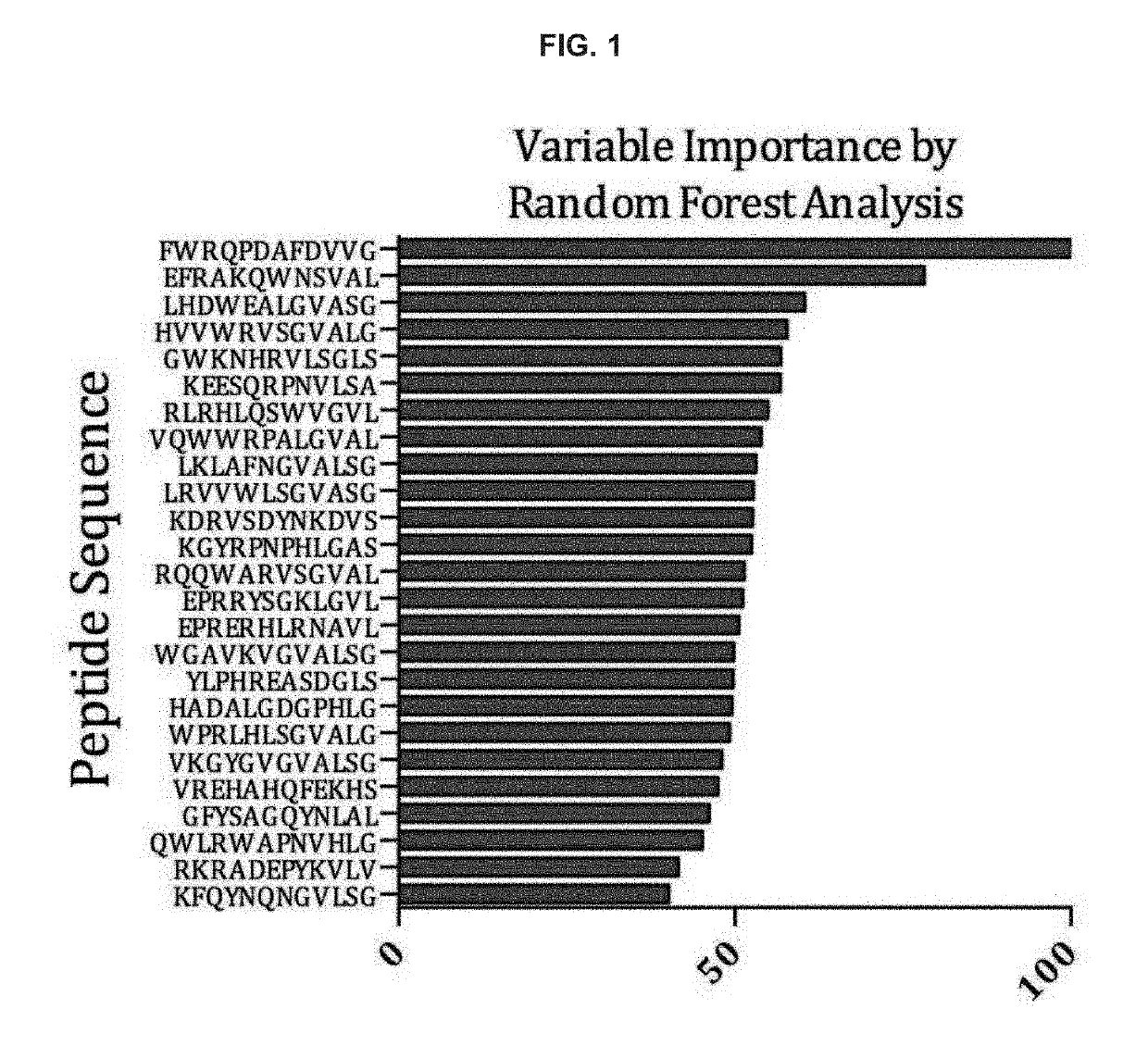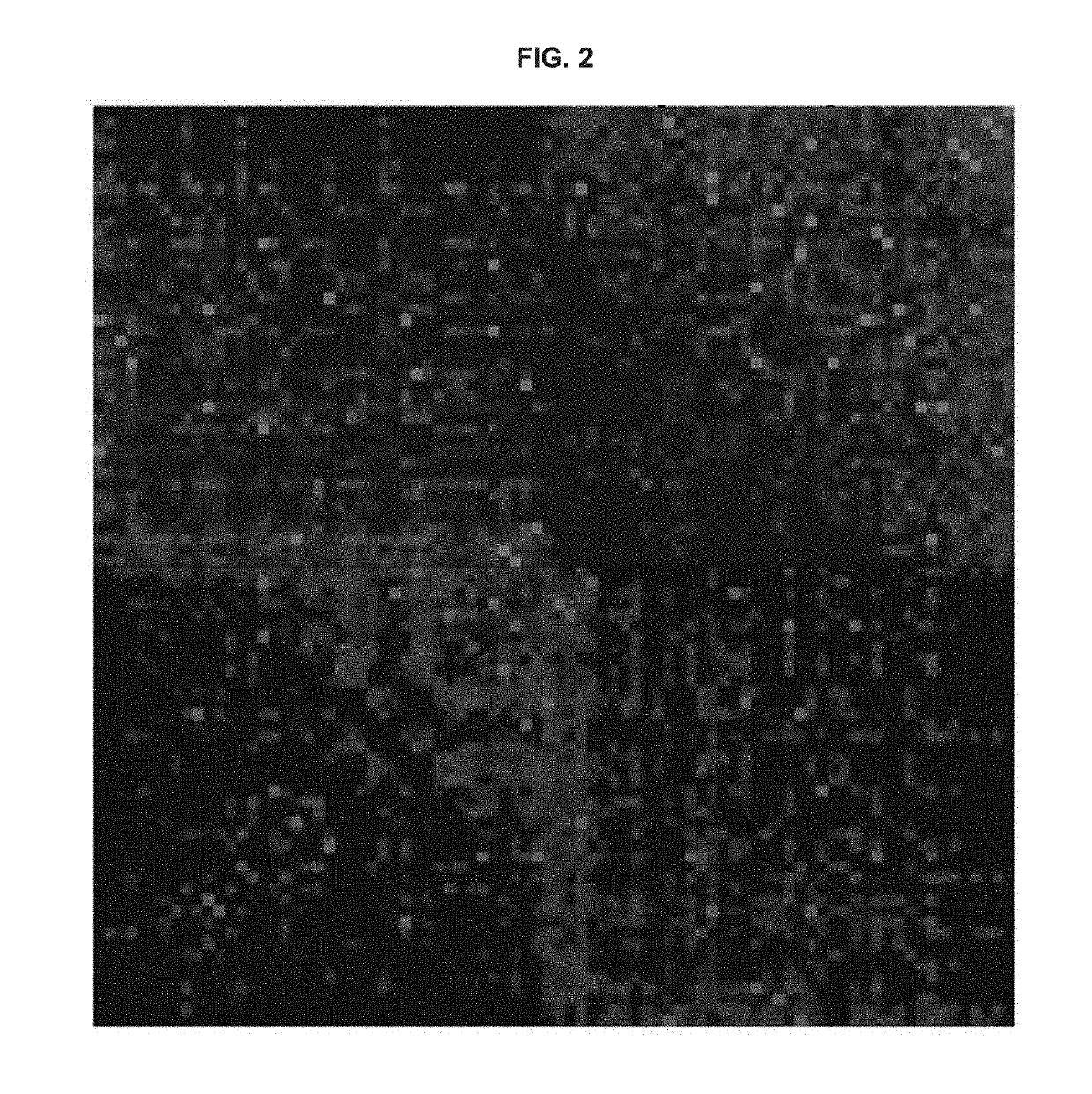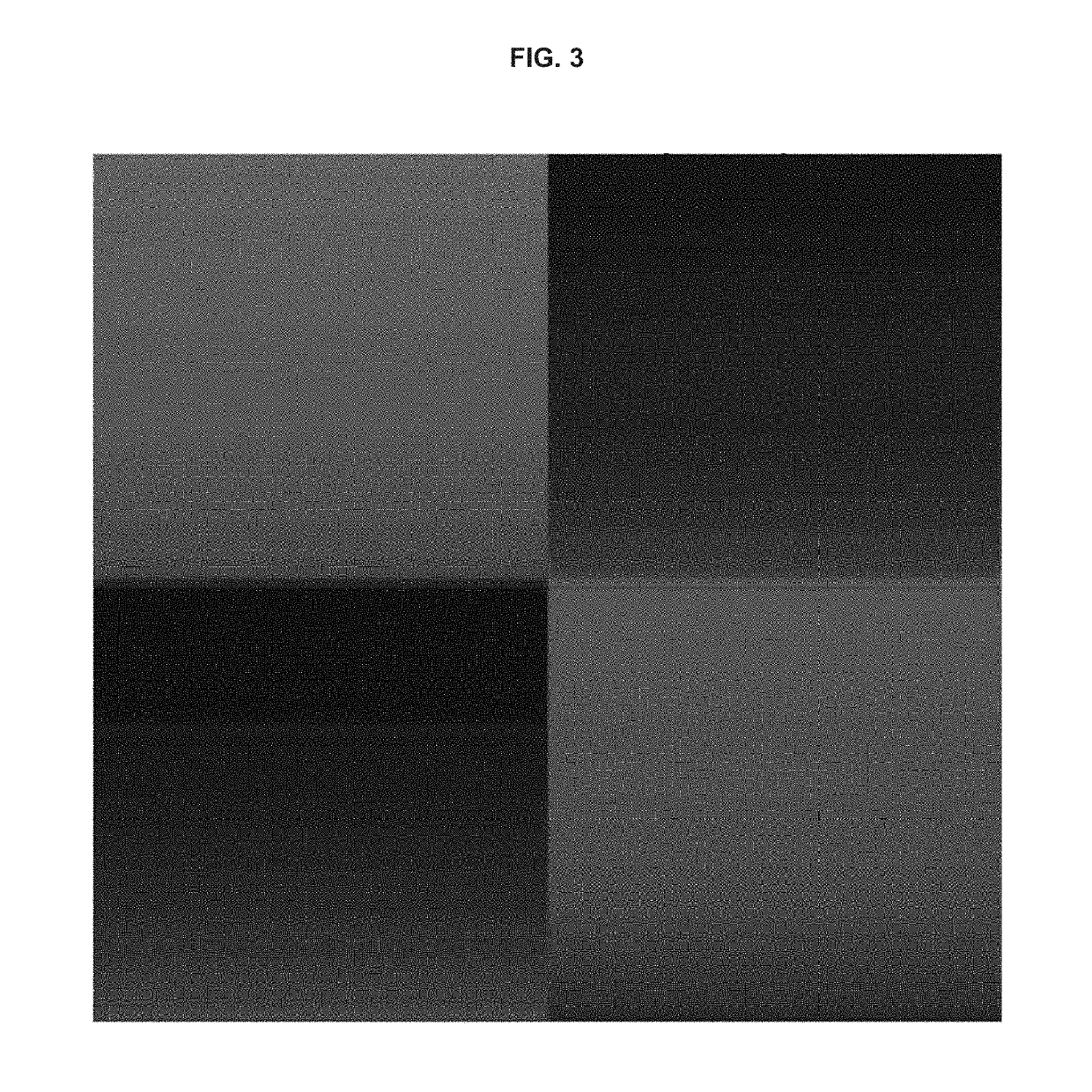Diagnosis and prognosis for chronic fatigue syndrome
a chronic fatigue syndrome and diagnosis technology, applied in the field of diagnosis and prognosis of chronic fatigue syndrome, can solve the problem that little progress has been made in achieving this goal
- Summary
- Abstract
- Description
- Claims
- Application Information
AI Technical Summary
Benefits of technology
Problems solved by technology
Method used
Image
Examples
example 1
mmunity Profiling of Subjects with Chronic Fatigue Syndrome Using a Peptide Microarray Differentiates Cases from Controls with High Specificity and Sensitivity
[0072]The goal of this study was to: 1) identify peptides that are uniquely immunoreactive to antibodies from chronic fatigue syndrome cases when compared against controls, 2) use these antibodies to develop a diagnostic signature, and 3) identify the naturally occurring antigens to which these antibodies specifically react with in vivo.
[0073]Methods: Sera samples from 21 chronic fatigue syndrome cases and 21 controls from the U.S. and Europe were used to probe a custom 125,000 12-mer peptide microarray, developed by the Biodesign Institute at Arizona State University and as described above. After each array was probed, processed, and imaged, the top 100 immunoreactive peptides that delineate cases and controls were used to develop a diagnostic signature. Additionally, the respective peptides were used to conduct homology sear...
example 2
mmunity Profiling of Subjects with Chronic Fatigue Syndrome
[0076]Chronic Fatigue Syndrome (CFS), also known as myalgic encephalomyelitis (ME), is a complex and heterogeneous illness of unknown etiology. The search for biomarkers that can delineate cases from controls is one of the most active areas of chronic fatigue syndrome research; however, little progress has been made in achieving this goal. In contrast to identifying biomarkers that are directly involved in the pathological process, an immunosignature identifies antibodies raised to proteins expressed during, and potentially involved in the pathological process. Although these proteins might be unknown, it is possible to identify antibodies that react to these proteins using random or pseudo-random peptide arrays.
[0077]Purpose: The goal of this study was to: 1) identify random or pseudo-random peptides that are uniquely immunoreactive to antibodies from chronic fatigue syndrome cases when compared against controls, 2) use the...
example 3
mmunity Profiling of Subjects with Chronic Fatigue Syndrome
[0101]Human serum samples were obtained and consisted of chronic fatigue syndrome case and control+pooled chronic fatigue syndrome case and pooled control samples. The samples were shipped to PeptideArrayCore for analysis. The samples were processed per standard protocol, and two IgG secondary antibodies, red monoclonal to human Fc and green polyclonal to H+L IgG chains, were used. The samples were run in duplicate to ensure high reproducibility. Data was median normalized and tested for consistent peptides up in case / down in control and vice versa. Case-up / control-down and case-down / control-up peptides were analyzed. Table 6 shows the list of case-up / control-down peptides in bold and case-down / control-up peptides in regular font.
[0102]FIGS. 7 and 8 show a heat map and a principal component analysis (PCA) scatterplot of the samples generated using a first generation array. The samples that were correctly predicted using leav...
PUM
| Property | Measurement | Unit |
|---|---|---|
| Fraction | aaaaa | aaaaa |
| Fraction | aaaaa | aaaaa |
| Fraction | aaaaa | aaaaa |
Abstract
Description
Claims
Application Information
 Login to View More
Login to View More - R&D
- Intellectual Property
- Life Sciences
- Materials
- Tech Scout
- Unparalleled Data Quality
- Higher Quality Content
- 60% Fewer Hallucinations
Browse by: Latest US Patents, China's latest patents, Technical Efficacy Thesaurus, Application Domain, Technology Topic, Popular Technical Reports.
© 2025 PatSnap. All rights reserved.Legal|Privacy policy|Modern Slavery Act Transparency Statement|Sitemap|About US| Contact US: help@patsnap.com



